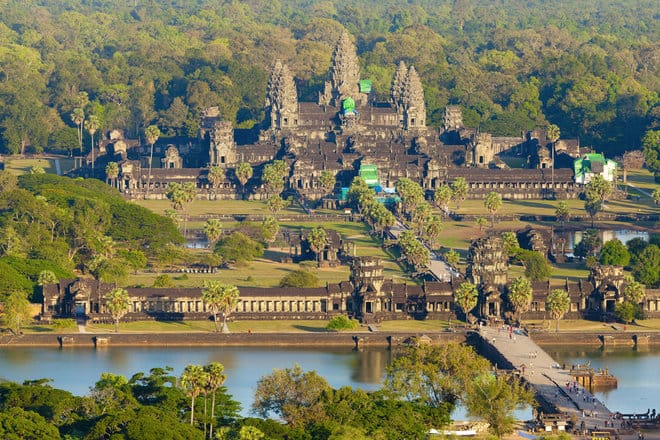Thanks to the stunning temples of Angkor, Cambodia is now firmly established on the Southeast Asian tourist trail. Many visitors head straight to the temples, staying in the country just a few days. But those who delve deeper find that Cambodia, with its balmy climate and laid back attitude to life has much more to offer: white-sand beaches and relaxed off-shore islands, forest-clad hills. And impenetrable jungle, a dynamic, yet beguiling, capital and sleepy provincial towns. In many of which colonial houses and shophouse terraces are now slowly being restored.

For a small country, Cambodia encompasses a surprisingly diverse range of terrain and scenery. Rice fields may be the quintessential feature of this predominantly flat and agricultural land. But there are also significant highland areas and 440km of coastline, as well as the massive Tonle Sap. It’s Southeast Asia’s largest freshwater lake, which dominates the heart of the country. In the east, the mighty Mekong River forms a natural divide, beyond which rise the mountains of Rattanakiri and Mondulkiri, where the last of Cambodia’s jungle can be found. In the southwest, the heavily forested Cardamom Mountains run down to the sea, while parts of the southeast are regularly inundated. As the Mekong and its sister river, the Bassac, overflow their banks.
For all its natural beauty and rich heritage. Cambodia is still probably best known in the West for its suffering at the hands of the fanatical Khmer Rouge. The people came to power in the 1970s with a program of mass execution that resulted in the death of a fifth of the population. Their three-year terror was followed by a protracted guerrilla war that ended only in 1998 and left much of the country in ruins. Nowadays, however, Cambodia is at peace, and visitors will find it a safe place to travel.
Supported by Western aid, the infrastructure has at last improved; new roads now connect all but the most remote provincial centre, rendering most air and river routes redundant. And enterprise is booming, attested to in the capital, Phnom Penh, and major towns by thronging markets, restored colonial villas newly opened as boutique hotels and the re-emergence of a modest middle class. Cambodian food, influenced by the cuisines of both China and Thailand, is delicately flavoured and quite delicious. While the country’s long tradition of artisanship has been revived, with weaving, stone-carving, and silversmithing much in evidence.
Temple sites, some dating back to the sixth century, dot the countryside. Several have only recently become accessible and many are now being restored. The majority of the country’s towns still retain some old-world charm. Preserving quaint shophouse terraces and colonial architecture dating back to the period of French rule. Though perhaps their most tangible colonial legacy is the piles of crusty baguettes heaped up in baskets and hawked around the streets in the early morning.
Though much still has to be done before Cambodia is properly back on its feet. And before most of the population sees a substantial improvement in their standard of living. The recovery of the country is largely down to the Cambodians themselves, eternally optimistic, tenacious and tirelessly hospitable.






